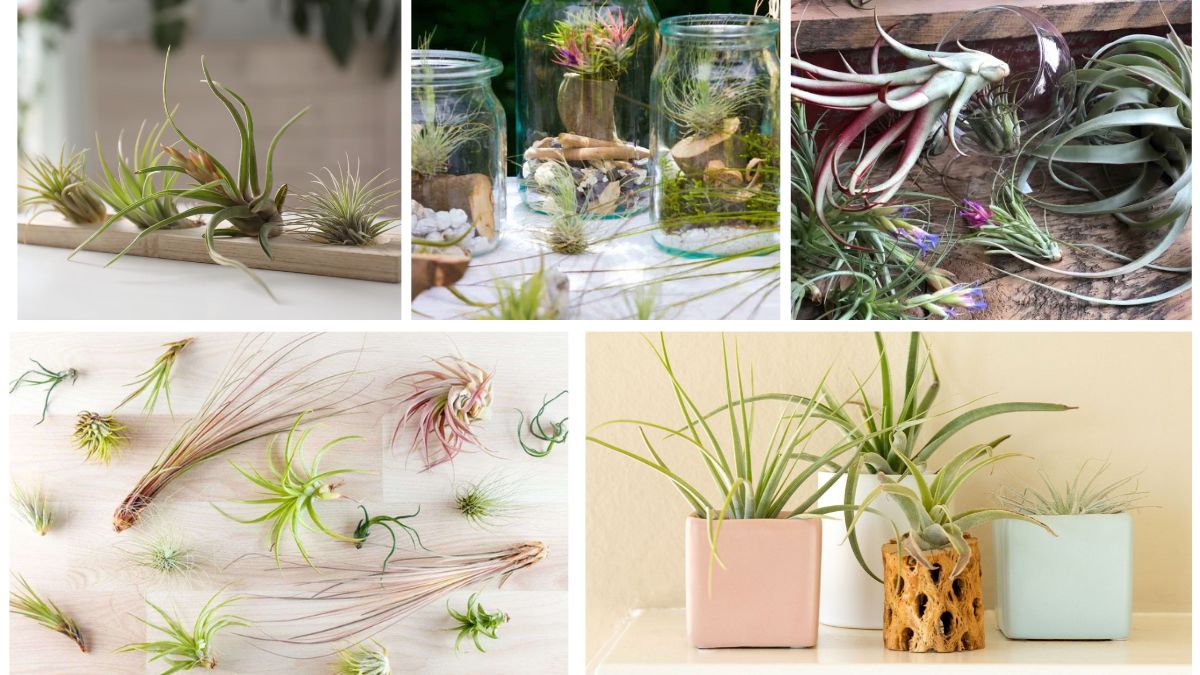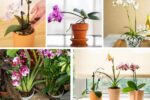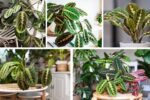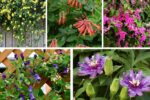Gardening often comes with the challenges of soil maintenance, watering schedules, and pests, but what if you could grow plants without soil at all? That’s where air plants, scientifically known as Tillandsia, come in. These fascinating little wonders from the bromeliad family have gained immense popularity in recent years because of their unique appearance, low-maintenance care, and ability to thrive without traditional soil.
Air plants absorb water and nutrients through their leaves rather than their roots, which makes them incredibly versatile for creative displays. Whether perched in glass terrariums, hanging from driftwood, or used as tabletop décor, they bring freshness and beauty into any space with minimal effort.
In this article, we’ll explore five air plants that don’t need soil or fuss, highlighting their unique characteristics, care requirements, and creative display ideas.
1. Tillandsia Ionantha – The Vibrant Gem
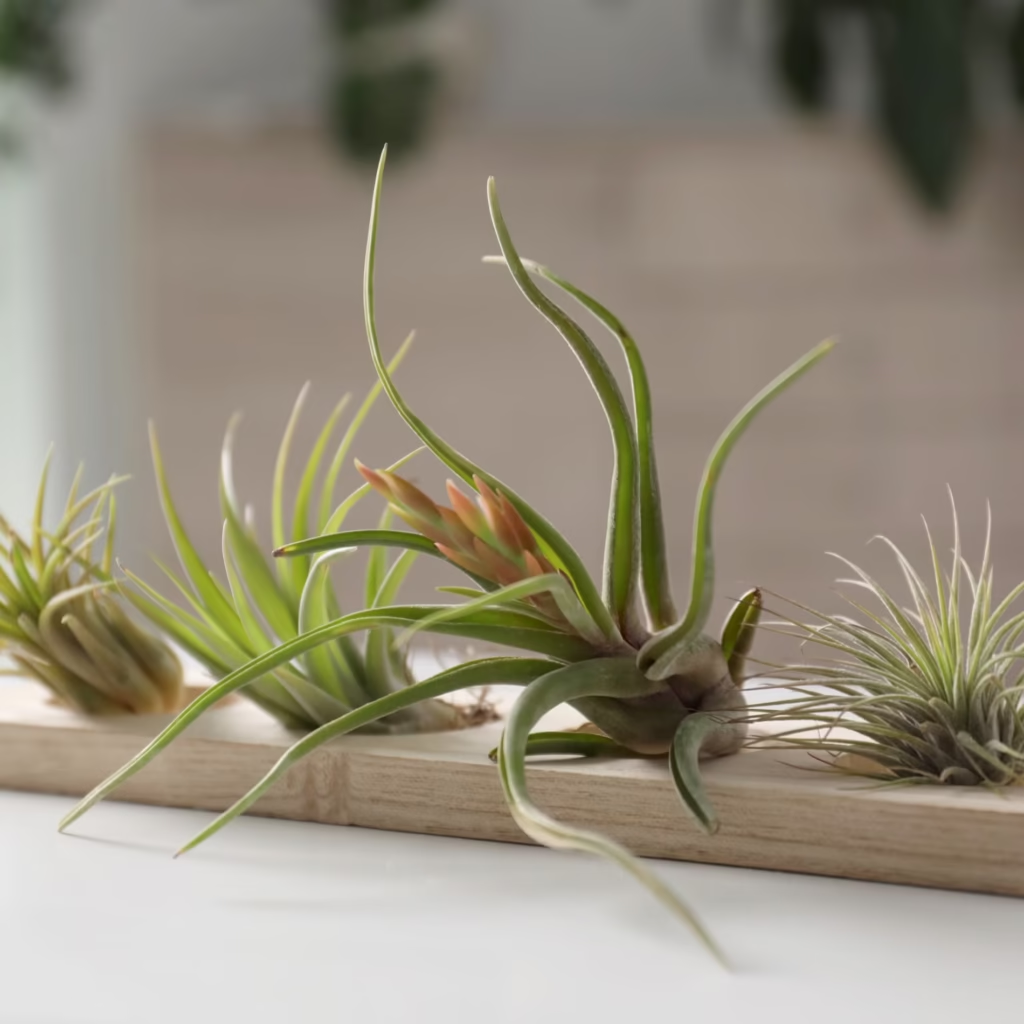
Tillandsia ionantha is one of the most popular and easy-to-care-for air plants, often chosen by beginners. This plant stands out because of its compact size, spiky leaves, and the ability to change colors as it matures.
Why it’s special:
- The leaves are typically green but turn brilliant shades of red, pink, or orange when the plant reaches blooming stage.
- It produces small but vibrant purple flowers, adding a striking contrast to the foliage.
- Its petite size (2–4 inches) makes it ideal for terrariums, glass globes, or as accents in decorative arrangements.
Care tips:
- Mist the plant 2–3 times a week or soak it in water for about 20 minutes once a week.
- Allow it to dry completely before placing it back in its holder to prevent rot.
- Keep it in a bright space with indirect light for best results.
Creative display idea: Place ionantha inside a sea shell, glass globe, or on a piece of driftwood for a charming coastal-inspired look.
2. Tillandsia Xerographica – The King of Air Plants
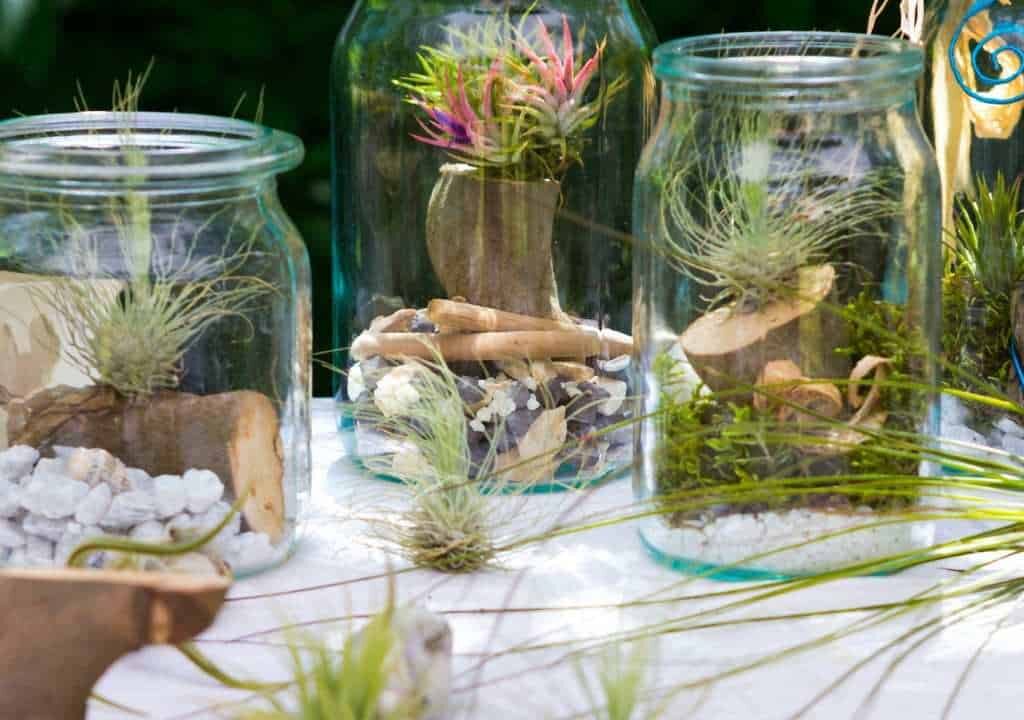
Nicknamed the “Queen” or “King” of air plants, Tillandsia xerographica is one of the most eye-catching varieties due to its large, silvery-green leaves that curl gracefully into rosettes. It is often used as a centerpiece in arrangements and can grow up to a foot wide.
Why it’s special:
- Xerographica is extremely drought-tolerant compared to other air plants, making it easier to maintain.
- It produces tall, colorful flower spikes that last for several months.
- Its unique curling leaves give it a sculptural, almost futuristic look, making it a designer’s favorite.
Care tips:
- Unlike smaller species, it thrives with occasional soaking—once every 10–14 days is enough.
- Place it in bright, indirect sunlight or under grow lights indoors.
- It prefers good air circulation, so avoid cramping it in closed containers.
Creative display idea: Showcase xerographica on a wooden tray, in a hanging macrame holder, or as a statement centerpiece on a coffee table.
3. Tillandsia Capitata – The Rosette Beauty
Tillandsia capitata is loved for its soft, velvety leaves that form a rosette shape. Depending on the variety, its leaves can range from silvery green to deep red, offering visual diversity. It is larger than ionantha but smaller than xerographica, making it a versatile choice for arrangements.
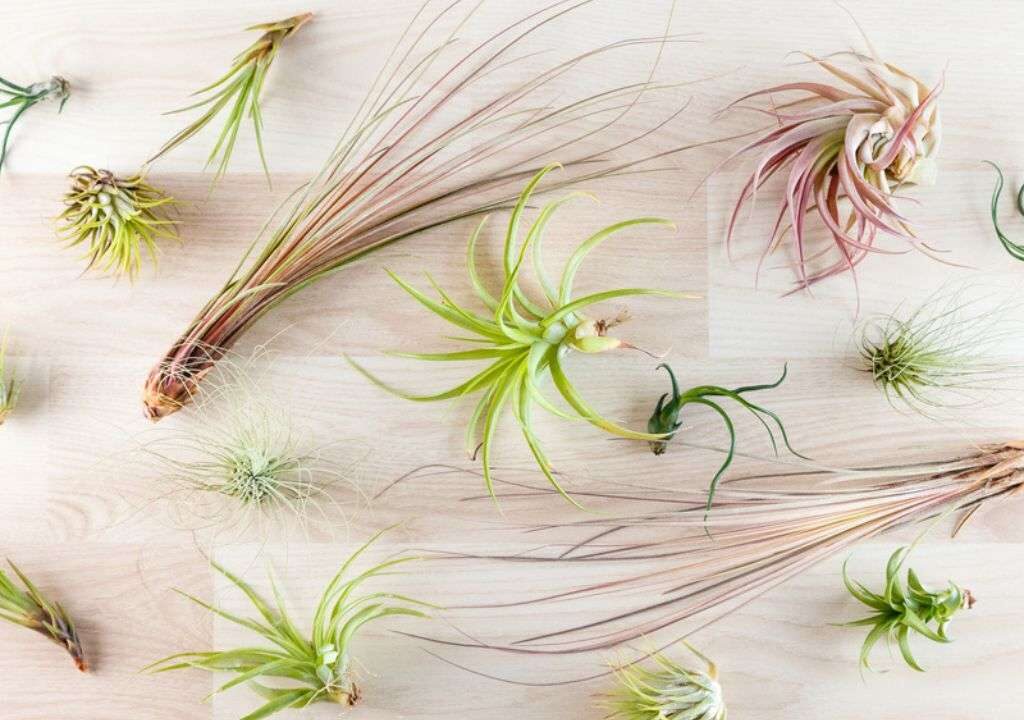
Why it’s special:
- Capitata blushes with shades of red or peach during bloom, adding a warm, tropical touch.
- It’s hardy and can tolerate both humid and drier indoor conditions.
- Often used in decorative bowls or grouped in terrariums, it blends beautifully with other air plants.
Care tips:
- Mist 2–3 times weekly or soak for 20–30 minutes once a week.
- Keep in a warm location with filtered sunlight.
- Avoid overwatering—shake off excess moisture after soaking.
Creative display idea: Combine capitata with succulents in an open terrarium or pair it with moss and stones for a natural woodland-inspired arrangement.
4. Tillandsia Bulbosa – The Alien Plant
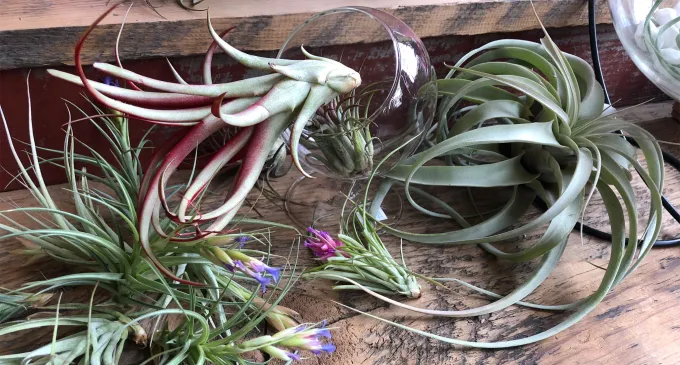
For those who love quirky and unusual plants, Tillandsia bulbosa is a perfect choice. Its bulbous base and twisting, tentacle-like leaves give it an almost alien-like appearance. This makes it a great conversation starter and a fun addition to modern or artistic home décor.
Why it’s special:
- Its hollow, bulb-like base makes it a natural habitat for ants in the wild, which in turn provide nutrients for the plant.
- The leaves turn reddish-purple when the plant is about to bloom.
- It’s an adaptable species that thrives in both humid and dry conditions.
Care tips:
- Requires regular misting or soaking (2–3 times weekly in dry climates, less in humid ones).
- Needs plenty of indirect light, making it perfect for window displays.
- Ensure it dries completely after watering to prevent rot at the bulb base.
Creative display idea: Attach bulbosa to driftwood, coral, or rocks for a dramatic, natural look. It also works beautifully in hanging terrariums.
5. Tillandsia Stricta – The Blooming Wonder
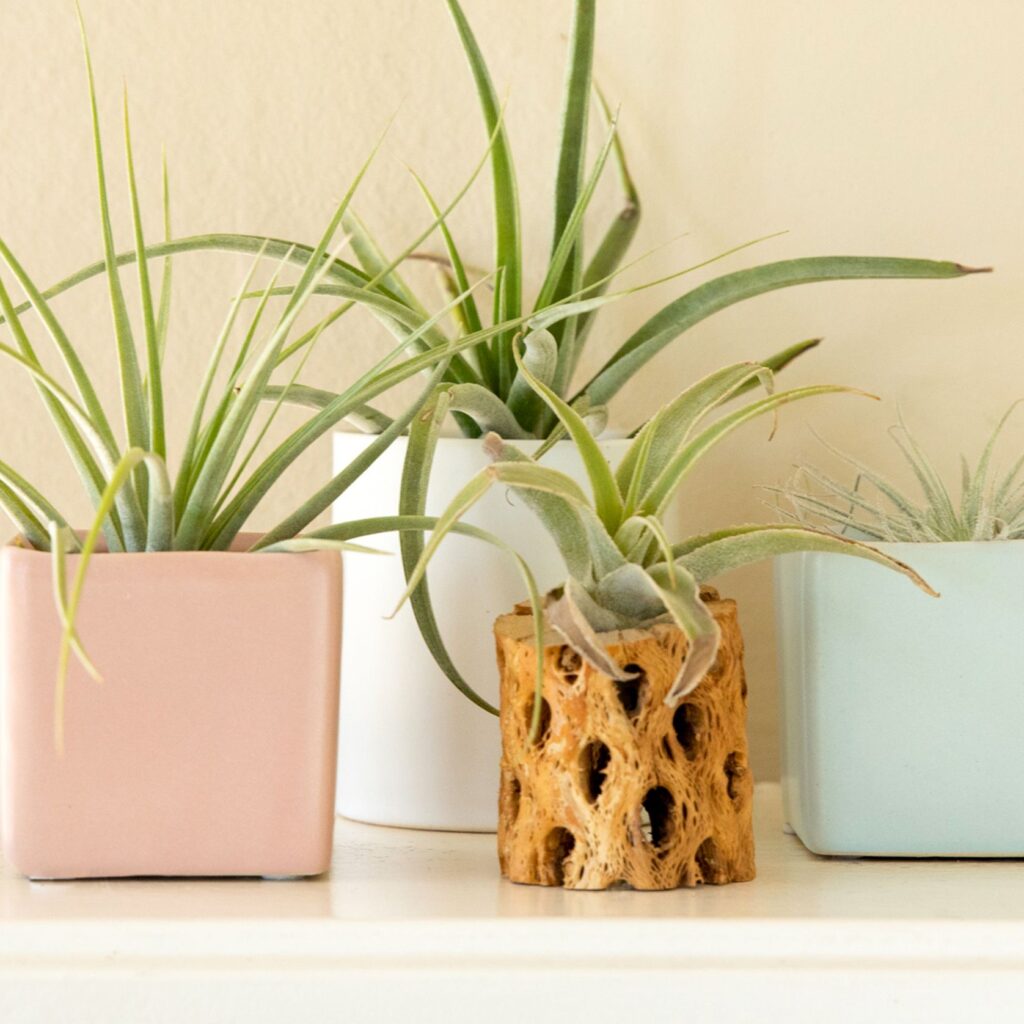
Tillandsia stricta is a hardy and versatile air plant that produces striking blooms. With its upright, narrow leaves and colorful flowers, it’s a favorite among collectors and beginners alike.
Why it’s special:
- Known for its ability to bloom multiple times throughout its life, often producing vivid pink or purple flowers.
- Compact and resilient, making it a low-maintenance choice.
- Works well both as a standalone display and in grouped arrangements.
Care tips:
- Mist daily in dry climates or soak once a week if humidity levels are low.
- Keep in bright, filtered sunlight.
- Fertilize monthly with a bromeliad or air plant-specific fertilizer to encourage blooming.
Creative display idea: Place stricta in a hanging planter, wall-mounted holder, or alongside other air plants for a striking cluster display.
Why Air Plants Are Perfect for Modern Homes
Aside from their beauty, air plants have several qualities that make them an excellent addition to any home or office:
- No soil needed – Perfect for creative arrangements that wouldn’t work with traditional plants.
- Compact and versatile – Their small size allows them to fit in any corner, from bookshelves to bathroom counters.
- Low maintenance – Minimal watering and easy care make them great for busy lifestyles.
- Air-purifying benefits – Like other plants, air plants help improve air quality by absorbing carbon dioxide and releasing oxygen.
- Decorative flexibility – They can be displayed in glass terrariums, mounted on wood, placed in seashells, or even hung from ceilings.
General Care Guidelines for All Air Plants
While each variety has its own quirks, some universal care rules apply to most air plants:
- Watering: Soak them in water for 15–30 minutes once a week or mist several times a week depending on humidity. Always allow them to dry upside down to prevent water from pooling at the base.
- Lighting: Bright, indirect light is ideal. Direct sun can scorch their leaves, while too little light will stunt growth.
- Air circulation: Ensure plants have good airflow; avoid sealing them inside closed terrariums.
- Temperature: They thrive in temperatures between 50–90°F (10–32°C), making them adaptable to most indoor climates.
- Fertilizing: Use a diluted bromeliad or orchid fertilizer once a month to encourage growth and blooms.
Conclusion
Air plants are living works of art—quirky, low-maintenance, and endlessly versatile. From the vibrant Tillandsia ionantha to the sculptural Xerographica, the elegant Capitata, the alien-like Bulbosa, and the blooming Stricta, these five air plants prove that you don’t need soil or fuss to enjoy the beauty of greenery indoors.
Whether you’re a beginner gardener or an experienced plant enthusiast, air plants offer endless creative possibilities for decorating and greening your space. With just a little care, these remarkable plants will not only survive but thrive, turning your home into a unique botanical showcase.
